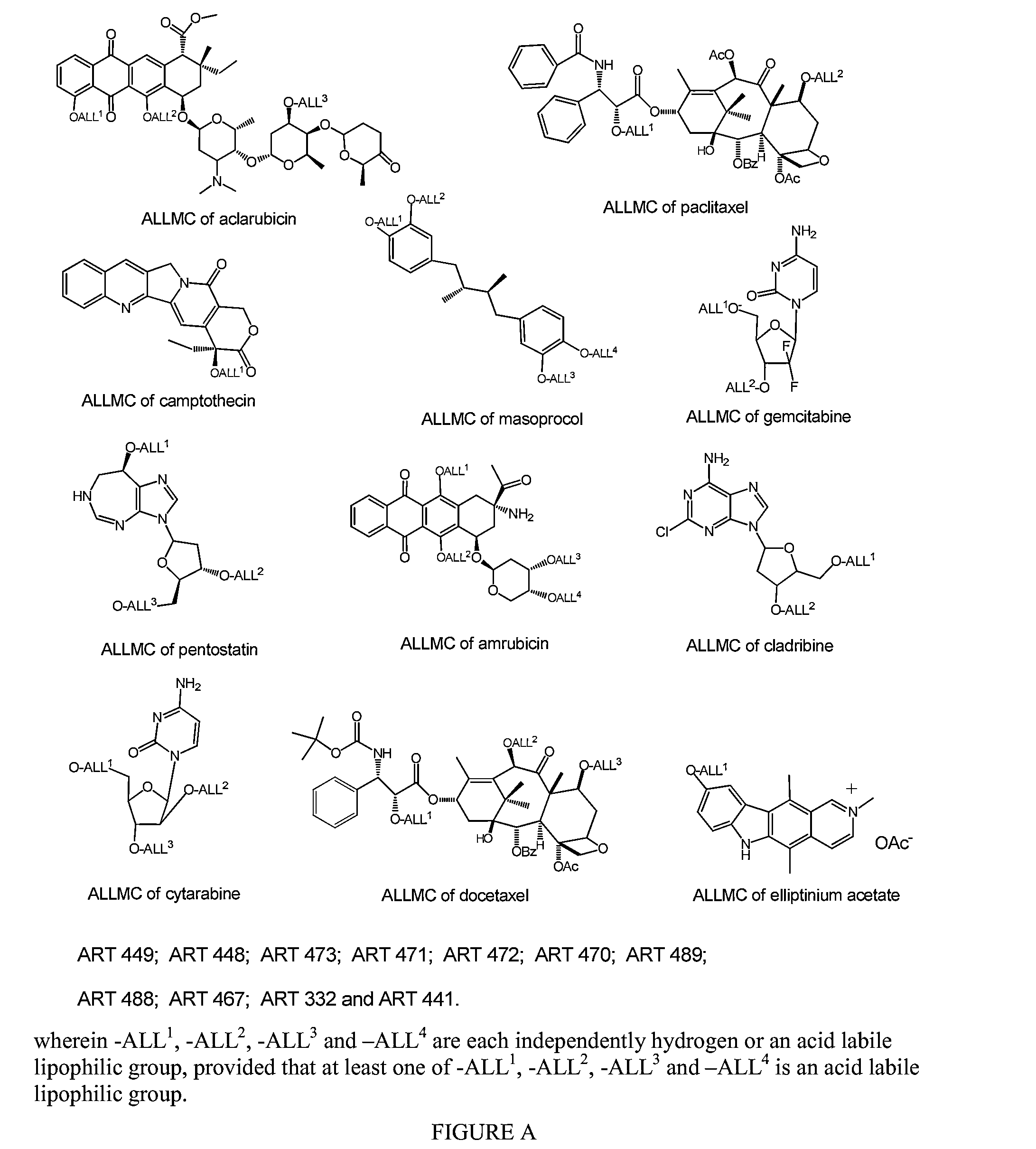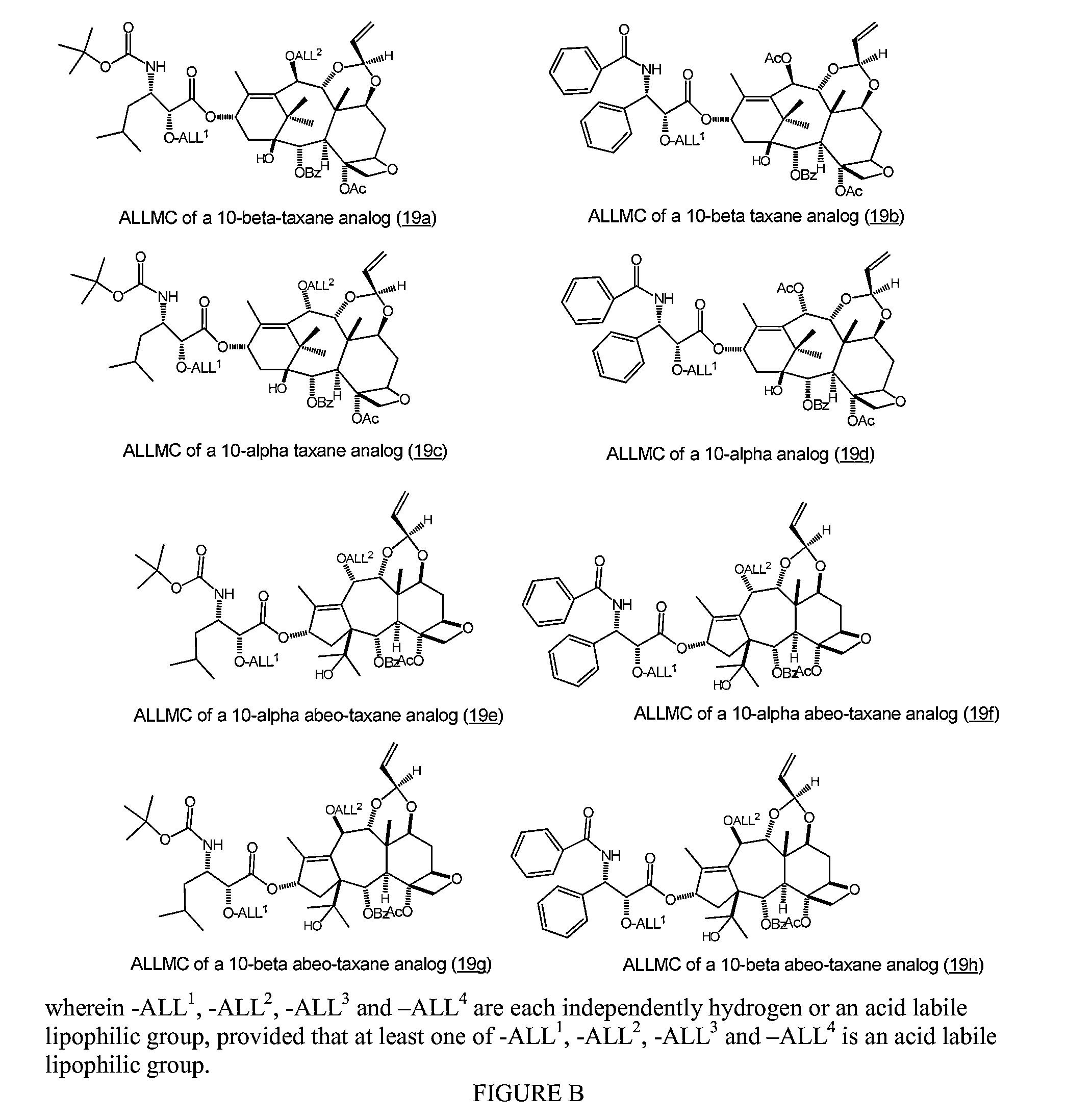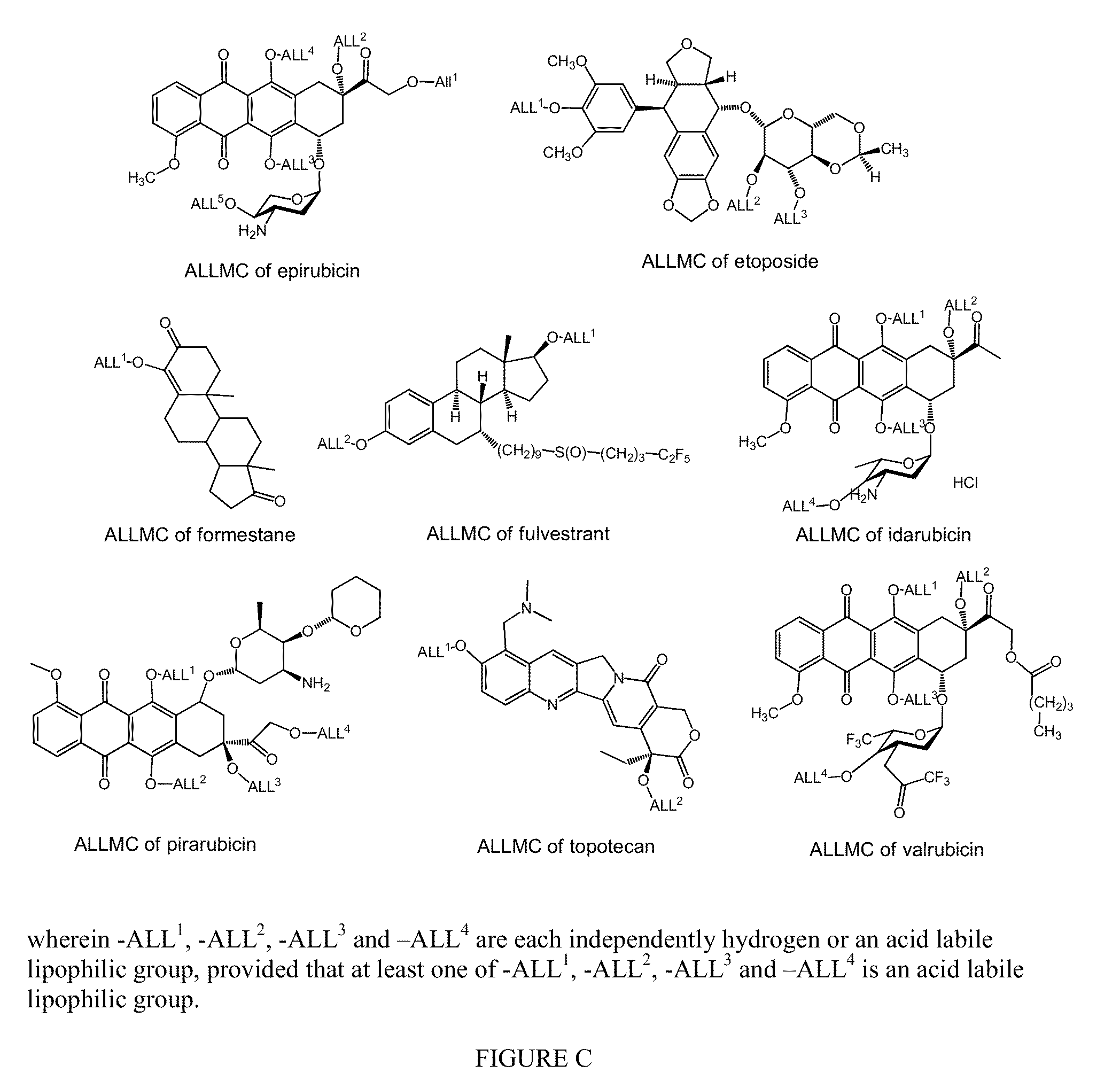Nanoparticulate Compositions for Targeted Delivery of Acid Labile, Lipophilic Prodrugs of Cancer Chemotherapeutics and Their Preparation
a technology of lipophilic prodrugs and nanoparticulates, which is applied in the direction of drug compositions, biocide, heterocyclic compound active ingredients, etc., can solve the problems of affecting the cytostatic activity of the drug in the complex. , to achieve the effect of reducing the cytostatic activity of the drug in the complex, reducing the toler
- Summary
- Abstract
- Description
- Claims
- Application Information
AI Technical Summary
Benefits of technology
Problems solved by technology
Method used
Image
Examples
experiment 1
Preparation of Drug-Free Lipid Emulsion Using Original Formulation
[0144]To investigate effect of discrete passes vs recycling mode (return of the material into the feed reservoir) and controlled (≦60° C.) ICJ temperature on particle size.
TABLE 1aFormulation composition.Components Weighed, mg (per 100 ml)DateLot#MaterialPCTGFCCEUVit EARTP188 DMPCPS17 Dec. 2012002.102.1TSPM2330123920615310100000
TABLE 1bRatios of major formulation components.TG / ART- PC / ART-207207PC / TGFC / CEN / AN / A1.881.35
Coarse Suspension was Prepared and MF Processed (Lot#002.103.1).
[0145]
TABLE 1cParticle size, ART-207 content, and particle stability of resultant emulsion.Particle size ART-207Formulation StabilityManufacturingby intensity, Content,Days pastParticle sizeDateLot#nmmg / mlRecovery, %mfgnm18 Dec. 2012002.103.163N / AN / A3679
[0146]MFP. FIG. 1 shows that particle size reaches the 55-60 nm plateau after 40 discrete passes that is equal to 20 min of processing (one discrete pass is ˜30 sec). MFP was stopped after 80...
experiment 2
Preparation of Drug-Free Lipid Emulsion Using Original Formulation
[0147]Investigate the effect of lower (<30° C.) ICJ temperature (i.e. effect of “local” cooling of IC jacket) on resultant particle size.
TABLE 2aFormulation composition.Components Weighed, mg (per 100 ml)DateLot#MaterialPCTGFCCEUVit EARTP188 DMPCPS17 Dec. 2012002.102.2TSPM2338 1247203152 10100000
TABLE 2bRatios for major formulation components.TG / ART-PC / ART-207207PC / TGFC / CEN / AN / A1.871.34
[0148]Coarse emulsion was prepared and MF processed (lot#002.104.1). MF processing was performed in recycling mode.
TABLE 2cParticle size, ART-207 content, and particle stability of resultant emulsion.Particle size ART-207Formulation StabilityManufacturing by intensity, Content,Days pastParticle sizeDateLot#nmmg / mlRecovery, %mfgnm19 Dec. 2012002.104.145N / AN / A3582
[0149]2a. Ice cubes were placed around IC jacket. After 10 min of MF processing the particle size dropped from 439 nm (coarse emulsion) to 66 nm, and in 20 min it reached a plate...
experiment 3
Preparation of ART-207 Containing Lipid Emulsion Using Original Formulation
[0152]Investigating ART-207 (Lot# AW-001-243) incorporation capacity of original formulation and effect of ART-207 on particle size and stability.
TABLE 3aFormulation composition.Components Weighed, mg (per 100 ml)DateLot#MaterialPCTGFCCEUVitEARTP188DMPCPS18 Dec. 2012002.103.2TSPM217611451841411010320000
TABLE 3bRatio for major formulation components.TG / ART- PC / ART-207207PC / TGFC / CE3.586.801.901.30
[0153]Coarse suspension was prepared and MF processed (lot#002.105.1).
TABLE 3cParticle size, ART-207 content, and particle stability of resultant emulsion.Particle size ART-207Formulation StabilityManufacturingby intensity,Content,Days pastParticle sizeDateLot#nmmg / mlRecovery, %mfgnm19 Dec. 2012002.105.1823.1498.135196
[0154]MFP. In FIG. 5, particle size reaches the plateau or resistance (Resistance 1—R1) at ˜130 nm after 30 min of processing at 10-20° C. Raising the temperature to 50-60° C. resulted in lowering particl...
PUM
| Property | Measurement | Unit |
|---|---|---|
| particle size | aaaaa | aaaaa |
| mean size distribution | aaaaa | aaaaa |
| logP | aaaaa | aaaaa |
Abstract
Description
Claims
Application Information
 Login to View More
Login to View More - R&D
- Intellectual Property
- Life Sciences
- Materials
- Tech Scout
- Unparalleled Data Quality
- Higher Quality Content
- 60% Fewer Hallucinations
Browse by: Latest US Patents, China's latest patents, Technical Efficacy Thesaurus, Application Domain, Technology Topic, Popular Technical Reports.
© 2025 PatSnap. All rights reserved.Legal|Privacy policy|Modern Slavery Act Transparency Statement|Sitemap|About US| Contact US: help@patsnap.com



